An Introduction to Quick Showcard Lettering, Norwegian Style
Reproduction, with English translation, of a rare Norwegian showcard lettering and layout booklet.
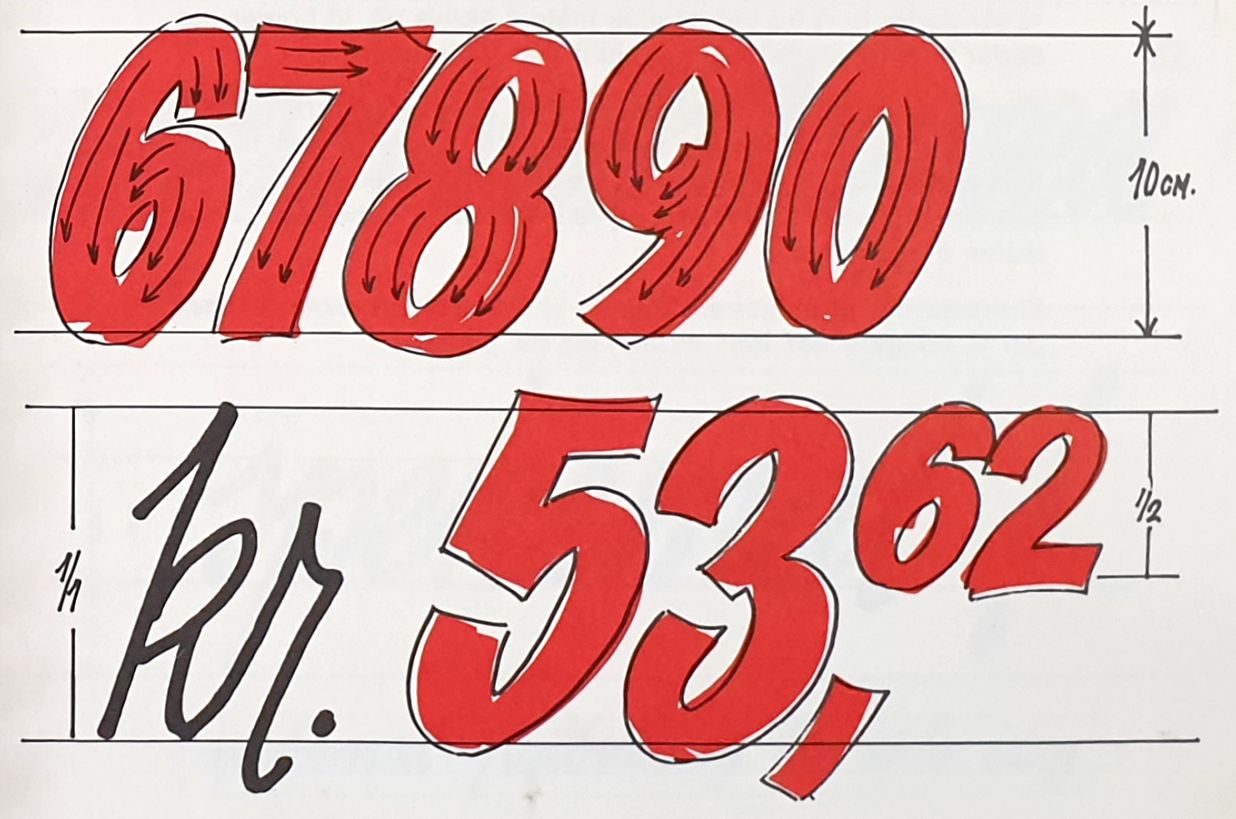
Richie Chlaszczak (@oslo.skiltmaler) recently got in touch with photos of a ring bound booklet giving basic instruction for quick showcard lettering and layout. It was passed to him by a friend whose grandfather worked with signs in the 1970s and 80s.
The booklet, Ny Skriftbok for Hurtigtegning av Plakater (New Lettering Book for the Quick Drawing of Showcards) by Kåre Madsen, was self-published with a limited print run from K. M. Reklame in Oslo. It is reproduced here using the photos and translations kindly provided by Richie for your benefit.
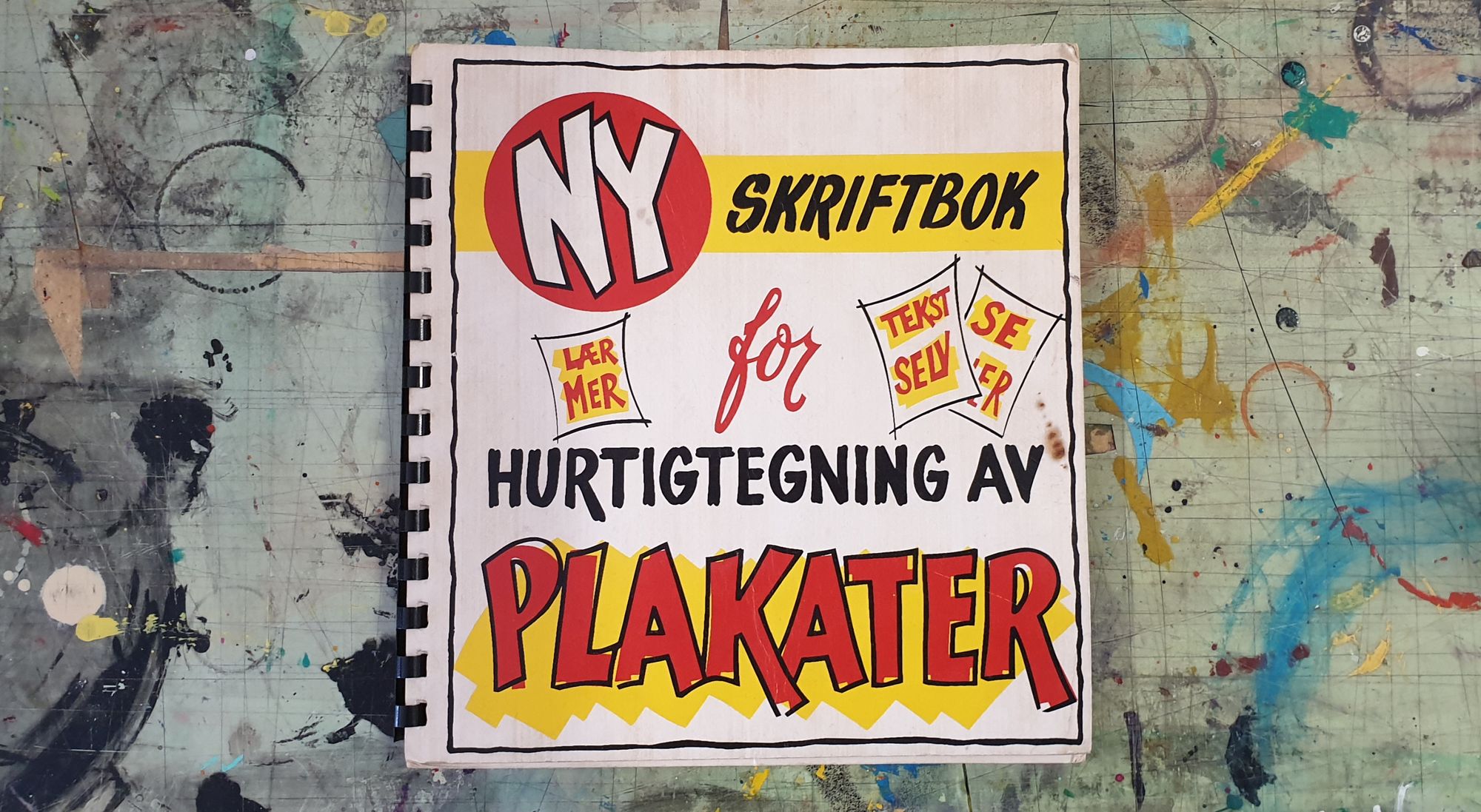
New Lettering Book for the Quick Drawing of Showcards
By Kåre Madsen, with translation by Richie Chlaszczak
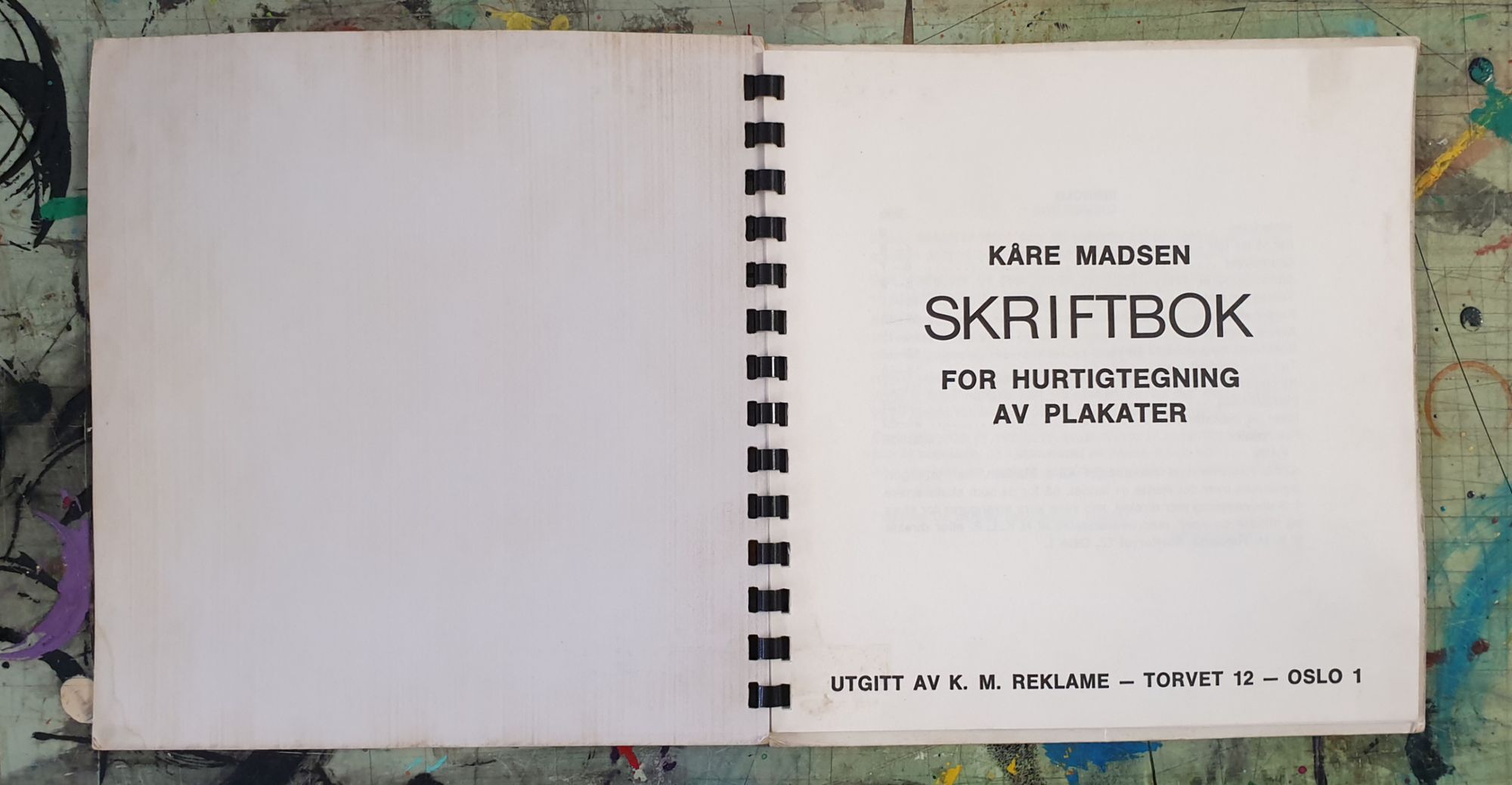
Contents & Introduction
K. M. Reklame, with advertising director Kåre Madsen, has organised showcard making workshops across the country. For those who wish to learn in a more direct manner, courses can be arranged for large and small groups by inquiry to N. K. L. F., or directly to K. M. Reklame at Stortorvet 12, Oslo 1.
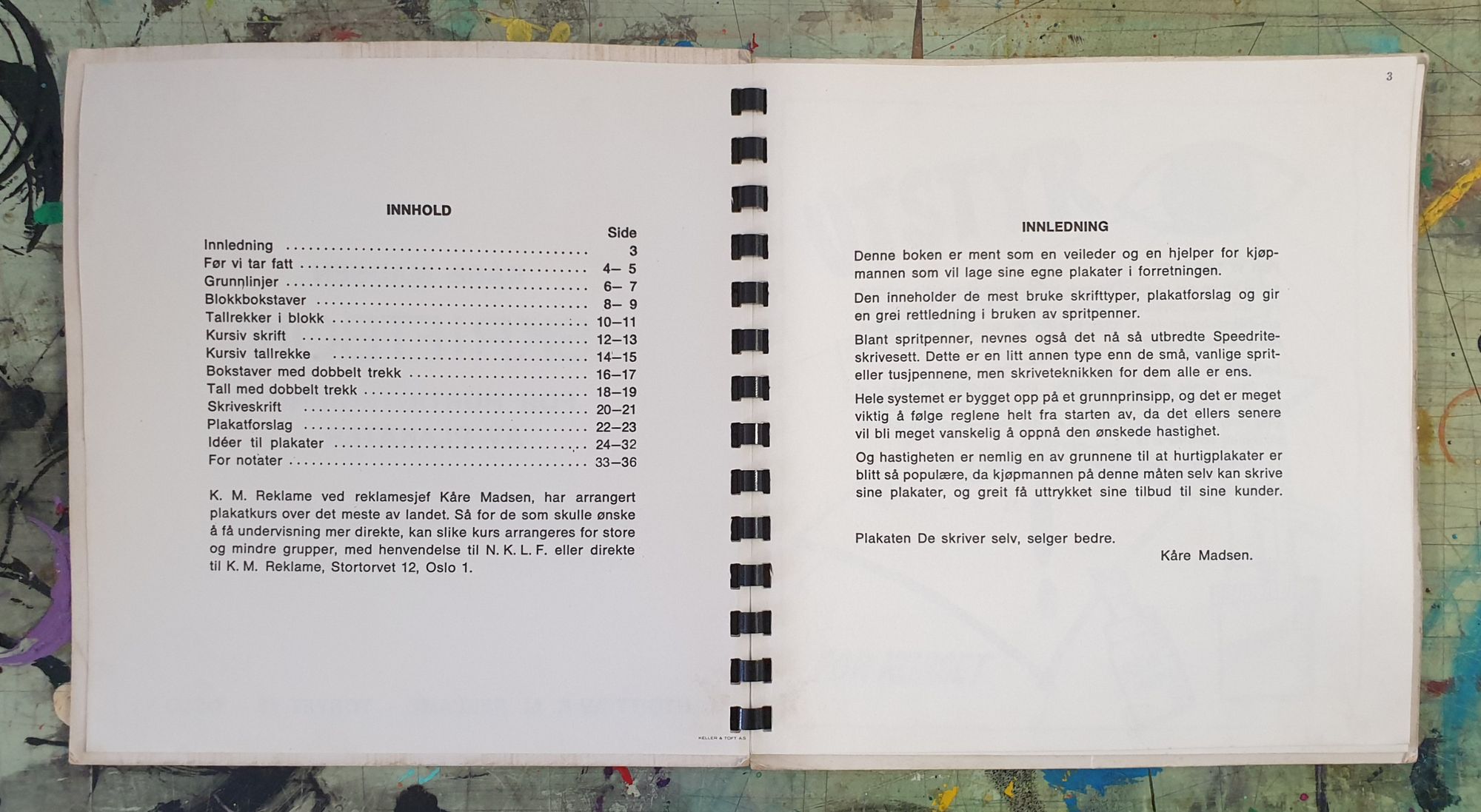
This book is meant as a guide and helpful resource for the merchant wishing to make his own posters for his business.
It contains the most used types of lettering, suggestions for posters, and gives good guidance in the use of permanent markers.
Among the markers, the widely available Speedrite writing set should be mentioned. It is different to the small fine line markers, or the regular alcohol markers, but the writing technique is the same for all of them.
The whole system is built upon a basic principle and it is very important to follow the rules from the very beginning, as it will otherwise be very difficult to achieve the desired speed later on.
And it is this speed that is one of the reasons that quick showcards have become so popular, allowing the merchant to write his own posters, and present their offers to their customers.
Showcards that they write themselves sell better.
Kåre Madsen
Pages 4 & 5: Before We Get Started
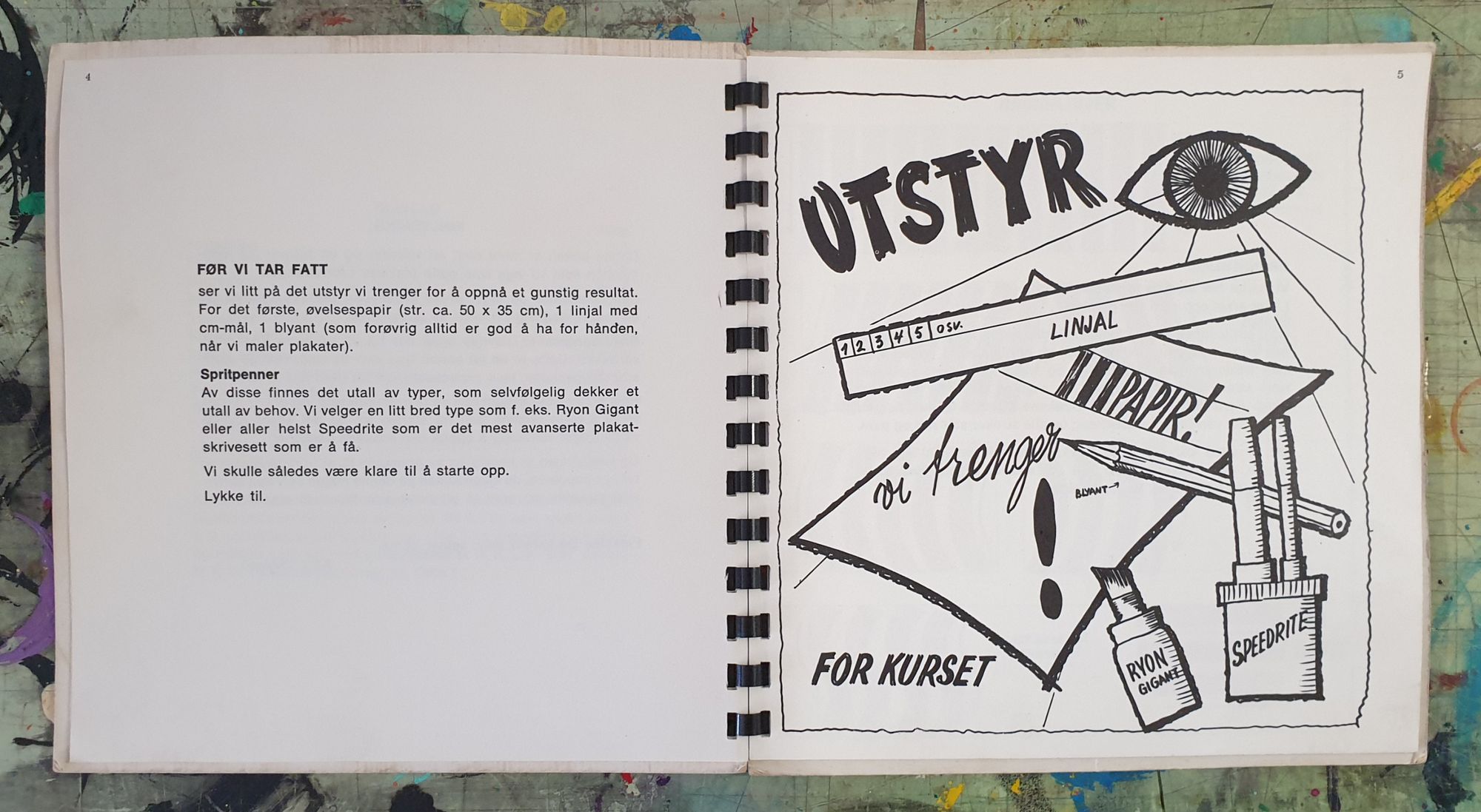
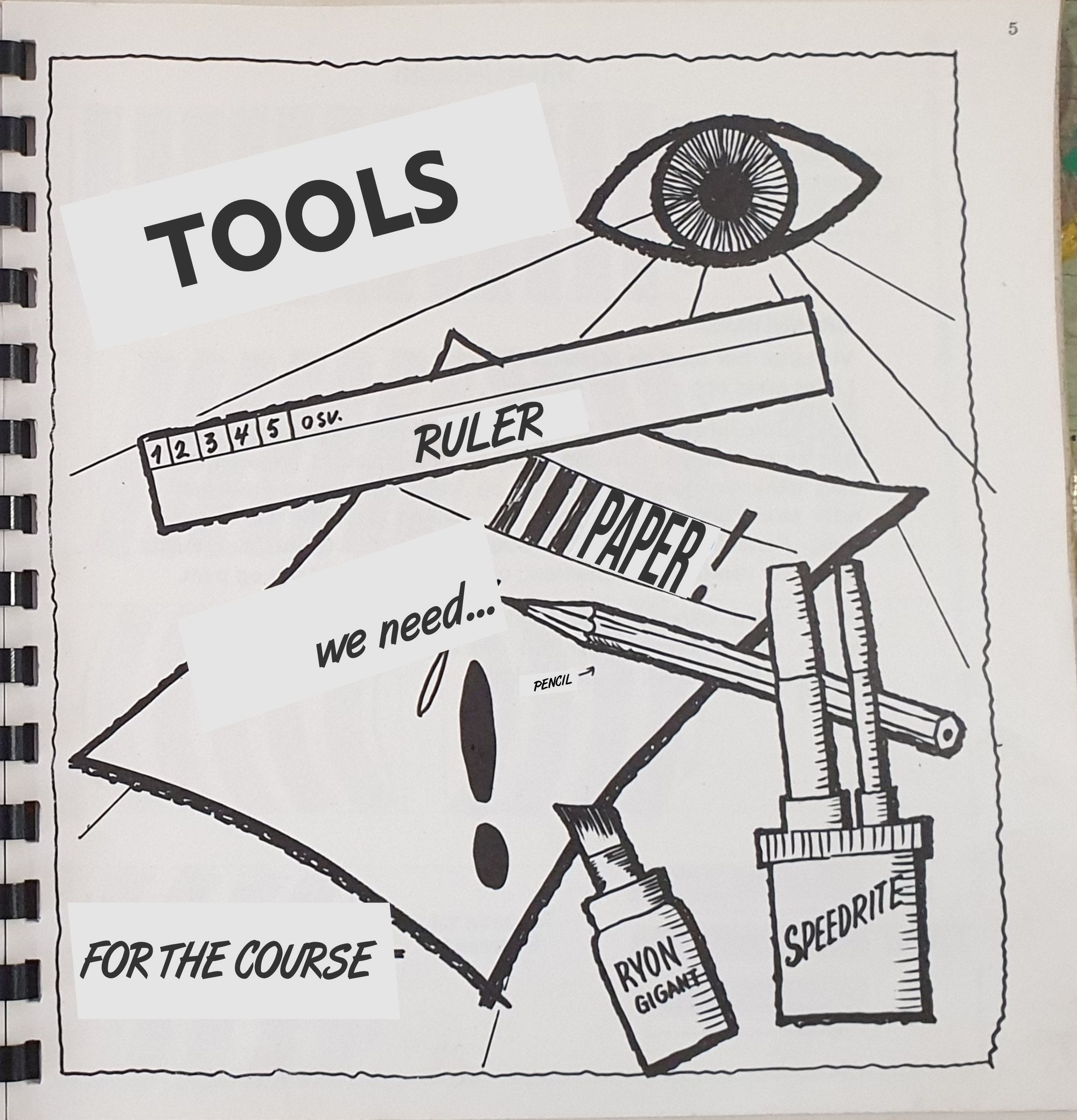
Let's take a look at the tools we need to achieve a satisfactory result. To begin with, practice paper at about 50 x 35 cm [20" x 13.5"], one ruler with a cm scale, and one pencil, which is always good to have at hand when we make showcards.